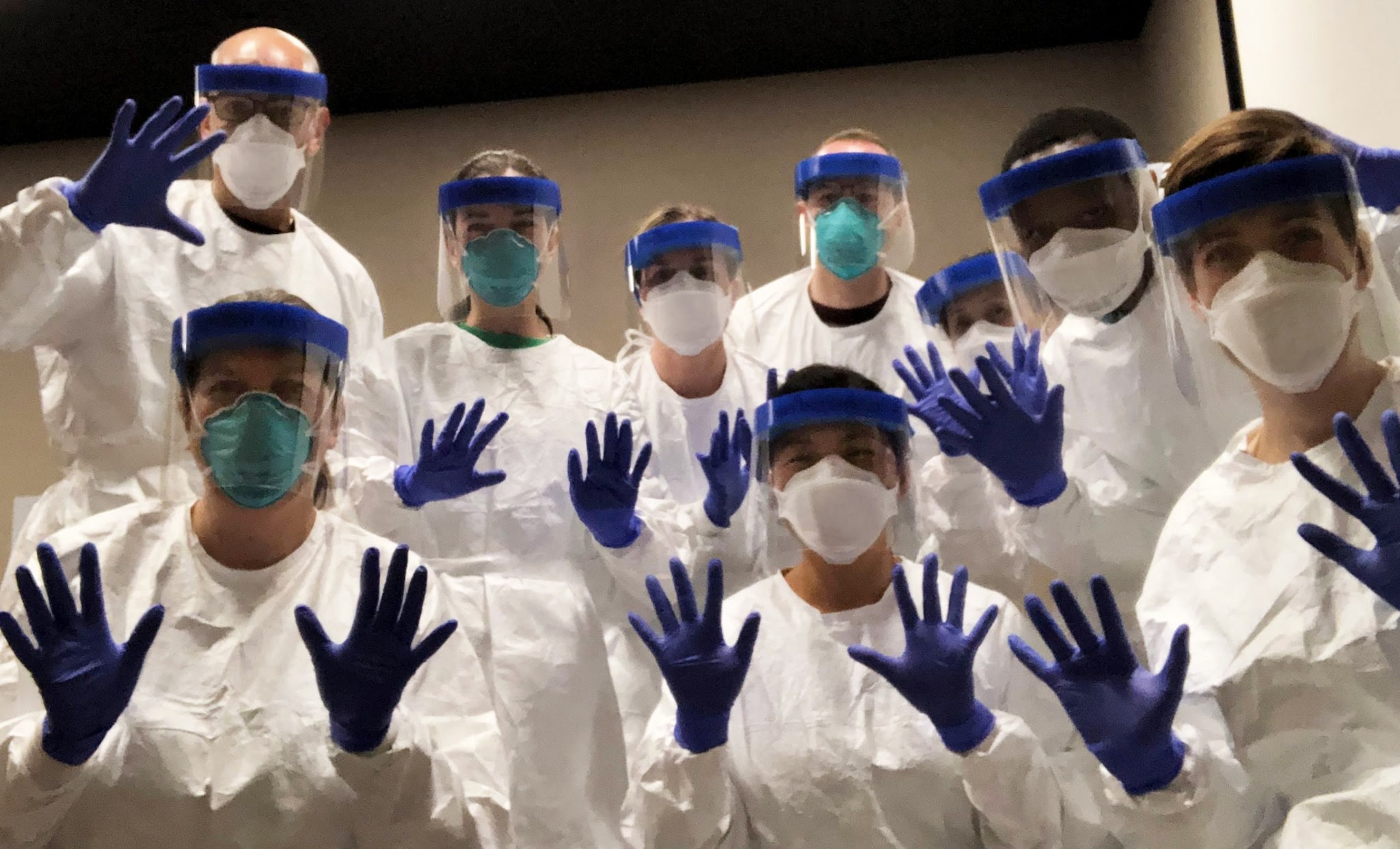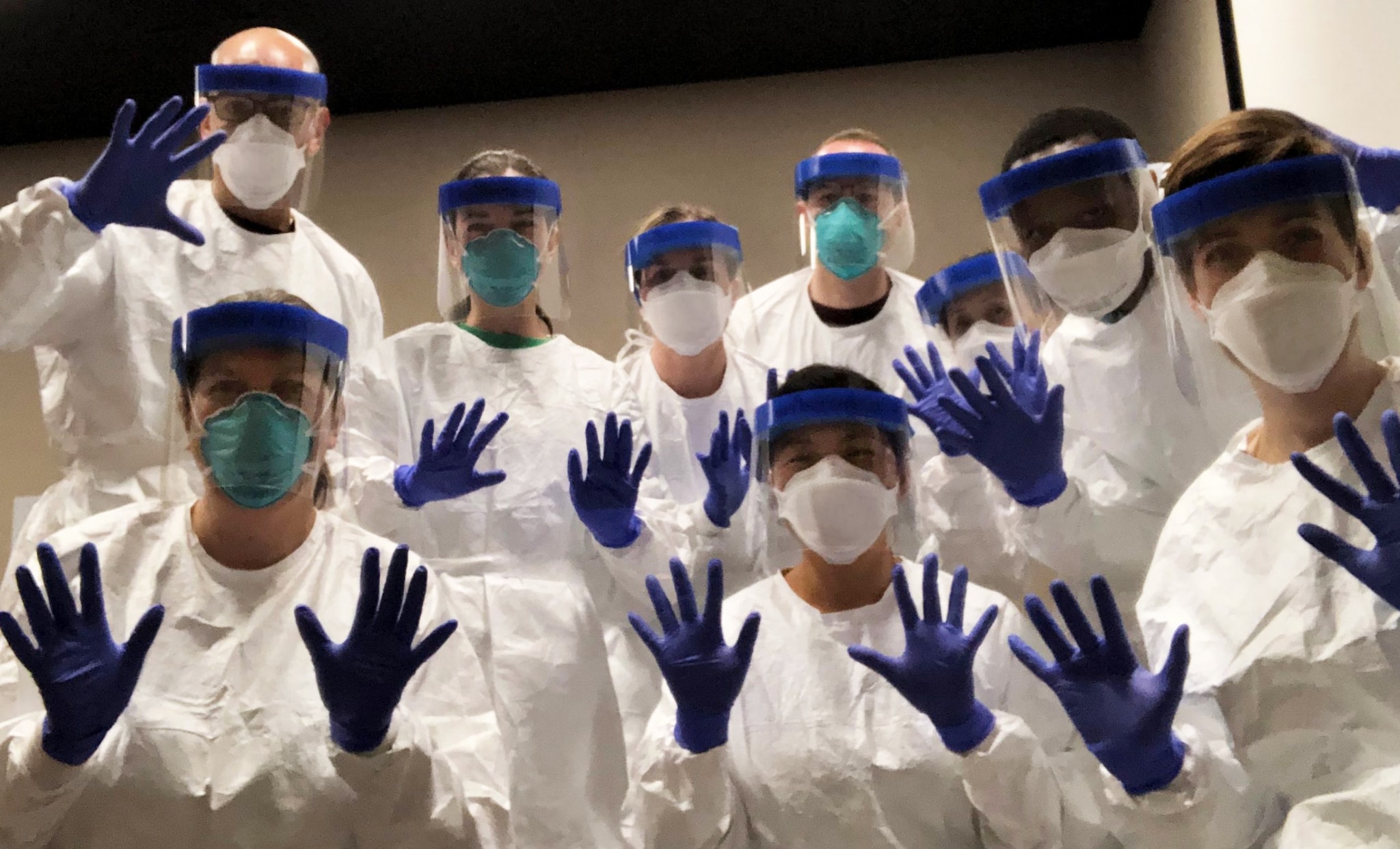
COVID-19 Response is a Family Affair for EIS Alums

CDC deployers practice in personal protective equipment before going door-to-door to investigate a COVID-19 outbreak in Utah. Top row, L-R: Eric Pevzner, Rebecca Chancey, Michelle O’Hegarty, Phillip Salvatore, Jeni Vuong, Henry Njuguna. Front, L-R: Vickie Fields, Cuc Tran, Katie Battey.
When CDC needed some quick answers about how COVID-19 spreads within households, Dr. Hannah Kirking knew she could count on her family — her Epidemic Intelligence Service family, that is.
Hannah, a medical epidemiologist and a lieutenant commander in the US Public Health Service, called on fellow EIS alum Captain Eric Pevzner to lead a team of current and former EIS officers to investigate household transmission in Utah. For Eric, now head of the EIS, it was a rare privilege.
“The EIS chief does not normally get the chance to deploy with EIS officers,” Eric says. “This was a great example of the EIS family working together to get really important data for the response.”
The EIS program is a competitive, rigorous, 2-year fellowship that trains qualified public health professionals for responses in the United States and around the world. Since its creation in 1951, the program has trained more than 3,800 “disease detectives” who have fought ailments like polio, smallpox, Ebola, HIV/AIDS, SARS, Zika, and now Covid-19.
The team visited homes of people with COVID-19 to collect nasal swabs and blood samples from all household members and later returned to collect more samples to learn if others had become infected. They wanted to determine how quickly the virus that causes COVID-19 spread and how effective preventive actions like self-isolation were in slowing or stopping the spread.
One unique aspect of a field investigation is the chance to develop relationships with people who are directly affected by COVID-19, Eric says.
“We spent many hours on the phone and in participants’ homes, where we were able to see firsthand how families were being affected by COVID-19,” he says. “They know providing these data is how they can contribute to addressing the COVID-19 pandemic, as well as help other people who may become infected.”
Bonds with household members can continue well beyond the field visits. Some often called or texted CDC staff to ask for guidance about quarantine or isolation.
EIS alum Katie Battey, a member of Eric’s team, received call after call from a household where young men were struggling with the boredom of home isolation and quarantine and wanted guidance on whether it was safe to throw a football outdoors with each other. Katie also spoke regularly with a pregnant woman who had COVID-19 and feared that her husband would not be able to attend the delivery and that the baby may be taken from her after birth.
Hannah also reached out to fellow EIS alum Dr. Angela Dunn, Utah’s state epidemiologist, who got the green light from the state to proceed.
Hannah assembled a duplicate study team in Wisconsin. For that team, too, her EIS family connections led her to experienced team members with the needed clinical, epidemiological, and laboratory skills.
CDC employees who usually work at the agency’s Atlanta headquarters got to work closely with people at the state and local health departments on the front lines of the pandemic. The collaborative field teams collected data for more than six weeks total, ensuring stronger scientific results.
“It’s a great reminder of how difficult public health work is at the state and local level,” Eric says. “The close working relationship provides a greater understanding of the challenges and realities state and local employees face.”
CDC teams are leading COVID-19 transmission studies in several states, and the results will help further shape guidelines to help more Americans avoid getting COVID-19 when someone in their home is infected.






















.png)











No hay comentarios:
Publicar un comentario